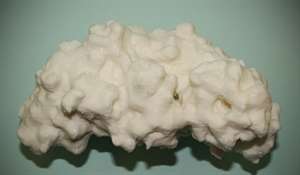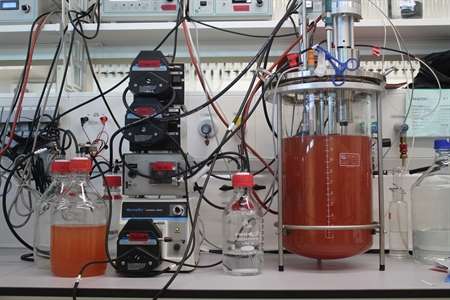Anammox synthesizes 'rocket fuel' hydrazine with special protein

Anaerobic ammonium-oxidizing (anammox) bacteria are known for their ability to convert ammonium into nitrogen gas without using oxygen. The chemical compound hydrazine, also used as rocket fuel and the strongest reductant on earth, is central in this process. An international team of microbiologists, including Boran Kartal from Radboud University, now describes the protein that synthesizes hydrazine in anammox in full detail. Nature magazine publishes the results on October 19.
Hydrazine is a highly toxic compound. Until now, anammox is the only organism that is known to synthesize it and use its reducing power in its metabolism. The specific protein responsible for the complicated synthesis of this compound is called hydrazine synthase.
Finding the responsible protein was not easy. Boran Kartal, microbiologist at Radboud University says: "This protein is really tricky to work with. It took us about two years to optimize the purification protocol and furthermore, the hydrazine synthesis reaction occurs very slowly."
3D-model
The microbiologists at Radboud University teamed up with colleagues at the Max Planck Institute for Medical Research in Heidelberg and the TU Delft to describe the hydrazine synthase protein in molecular detail. Boran Kartal: "Our colleagues in Heidelberg are specialized in crystallography. They were able to make a 3D-model of the protein. This enabled us to hypothesize that the reaction occurs at two different active sites in two consequent steps." Christina Ferousi, PhD student at Radboud University's department of Microbiology, is now investigating whether this is indeed the way the protein works.
Anammox in industry or wastewater treatment?

Anammox bacteria produce hydrazine similar to the two-step industrial Olin-Raschig process developed in 1906. So could we use the protein to speed up industrial hydrazine production? No, not with our current understanding of how the protein functions, Kartal says firmly. He does see some other possible applications.
"In order to use anammox bacteria in innovative wastewater treatment, we have to know exactly how they function. Just like civil engineers know everything about their materials, environmental engineers like me need to know exactly how our bacteria work. Microorganisms are the materials I use to build smart environmental solutions. And this specific protein plays a major part in one of the most interesting attributes of the anammox bacteria, therefore I would like to know everything about it."
More information: Andreas Dietl et al. The inner workings of the hydrazine synthase multiprotein complex, Nature (2015). DOI: 10.1038/nature15517
Journal information: Nature
Provided by Radboud University

















